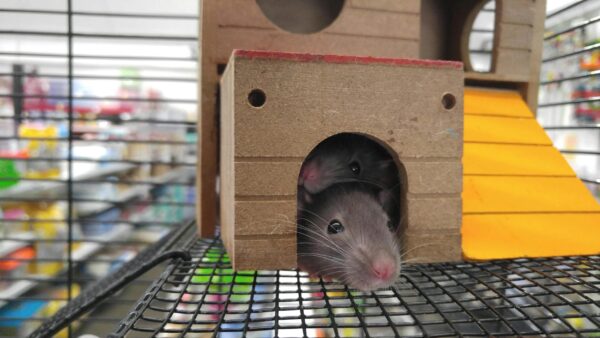A new study in Neuron, conducted by Harvard researchers, showed that anxious mice restricted food or even starved themselves to help reduce symptoms of anxiety, mimicking classic behaviors in anorexia nervosa.
The study suggests a biological basis for why extreme anxiety can lead to caloric restriction, and I’d invite you to either read the study for the whole scoop or Amy McDermott’s briefer recap here.
But basically, the science involves the hunger circuitry of the brain which includes AgRP neurons.
When those neurons were stimulated, mice ate more and suddenly grew bolder (in contrast with anxious mice) and started to “wander into unsheltered areas or walk across shock grids to forage.”
The study is valuable because it provides both a mouse and the beginnings of a biological-model for a phenomenon well-known in clinical practice – stress can lead to caloric deprivation.
The authors note that human patients with anorexia nervosa will describe self-starvation as “pleasant, potentially because food restriction can be anxiolytic.”
In other words, sometimes patients with anorexia nervosa will restrict – not just because of body image, although that might be part of the equation – but also because restriction involves some kind of relief from the extreme stress they’re experiencing.
And that makes sense, doesn’t it.
I don’t know about you, but for me, throughout life, during moments of extreme duress, food doesn’t just become a second thought, it also becomes somewhat repulsive because stress can rob me of appetite.
Of course, that’s not true for everyone. At all. Many people eat more heavily under extreme stress, as a way of coping.
But regardless, it seems that stress serves as the impetus for one behavior or the other.
Thus, it sort of logically follows that treating anxiety might be one way of getting at the eating disorder.
Of course, that’s a very simplistic solution to an enormously challenging disease. And an enormously deadly one.
Anorexia nervosa is the most deadly mental disorder, and it should be noted that 55-97% of its victims also suffer from other mood disorders such as major depression, anxiety disorders, PTSD, personality disorders and others.
Up to 20% of those with the disorder will pass away from complications related to the disease within 20 years.
Of those complications, suicide remains the leading cause of early mortality.
It’s also common for cardiovascular issues, directly tied to anorexia, to threaten victims. As the heart shrinks from starvation, a host of complications occur that can lead to early death.
Gastrointestinal disorders are also common (also associated with starvation’s effects), as are endocrine disorders.
In short, this is a disease that wreaks havoc on a victim’s mind and body, making it one of the hardest to treat and most tragic. We can’t necessarily see depression or anxiety on a face (many of us are good at masking it), but the effect of an eating disorder is obvious.
Finally, here are some resources on eating disorders:
Eating Disorder Hope’s website, which offers a terrific overview of the condition, statistics, and research.
The National Institute of Mental Health on eating disorders, including signs, symptoms, risk factors, treatments and help.
A 24/7 hotline for those struggling with eating disorders or any other mental health disorder.
Six Common Types of Eating Disorders.
And find an eating disorder therapist near you.
Also, remember, that this study is further proof that stress responses can lead to anorexia-like behavior, as well as the condition itself. Thus, with other mood disorders presenting so frequently with anorexia, I’ll include my usual links for those disorders.
For readers from the United States….
Find a psychiatrist here.
Find a therapist here.
For readers, internationally, seek help from a local resource.
For salvation, Christ and Christ alone.
May the Lord bless you, dear friends.
[Photo: Pexels, free photos]

